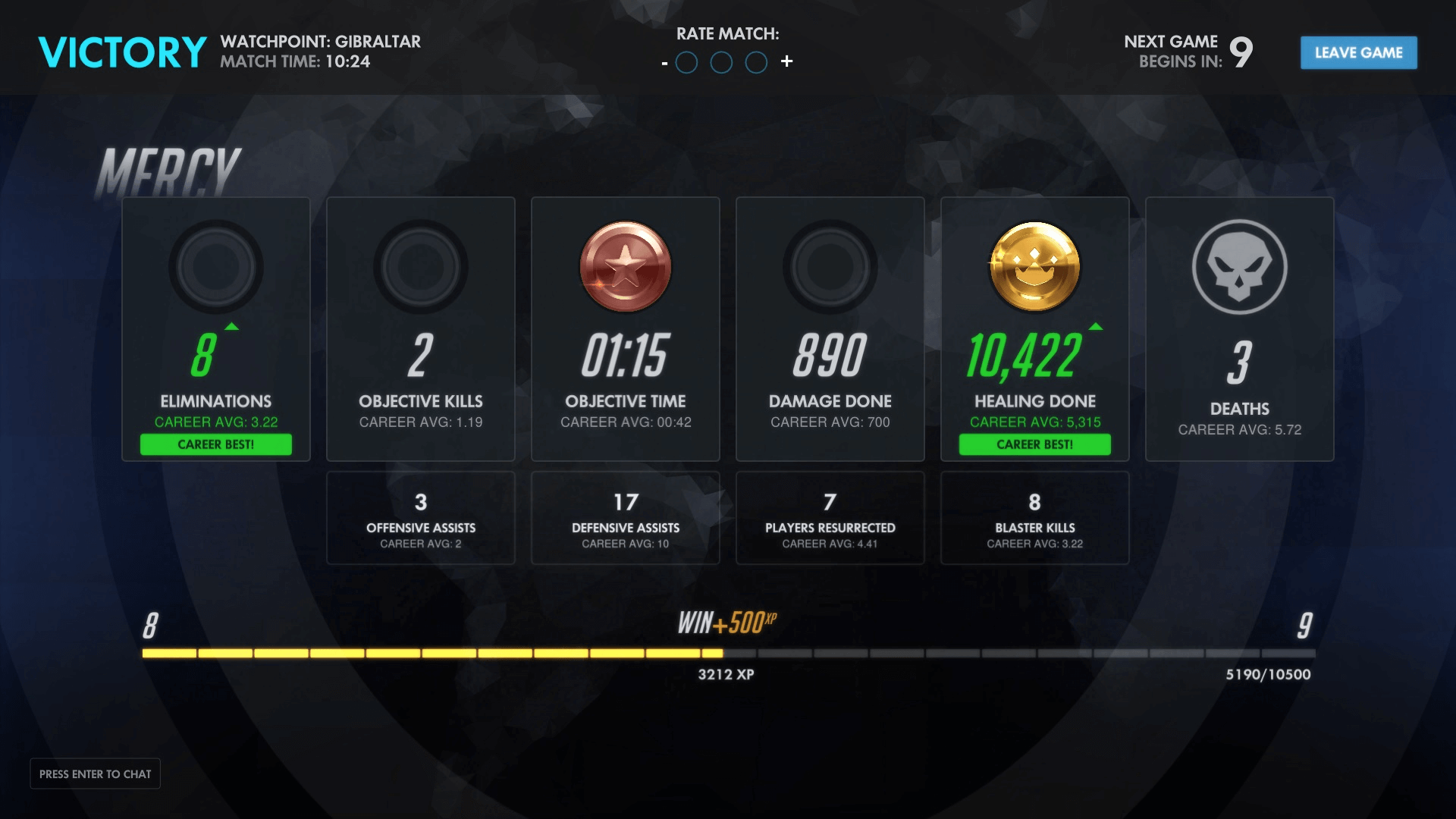
Overwatch Review: A Masterpiece In UX Design
With the launch of Overwatch, it looks like Blizzard has another massive success on their hands.
The game reached over 10 million users only three weeks after launch, climbed into the top 5 most streamed games on Twitch, and became the first game in four years to replace League of Legends as the most played game in South Korean PC Bang ratings.
For those who are not familiar with the game, Overwatch is a class based first person shooter (FPS) that puts players in 6 versus 6 objective based matches.
Players currently have a choice of many different heroes, each with their own unique skills and attributes, that are divided into four different categories: Attack, Defense, Tank, and Support, to ideally balance out a team composition for the best chances of winning.
To What Can We Attribute This Early Success?
Simply being the new shiny game on the block?
Maybe partly, but the game is not that much different than previous class based shooters like Team Fortress 2.
Is it simply because it is a game put out by a towering company like Blizzard?
Again, maybe partly, but we have seen plenty of big name companies put out titles that flopped like Destiny (by Activision, which owns Blizzard), Titanfall (by EA), and Watch Dogs (by Ubisoft.)
The main contributing factor, I think, is how well the UX is designed in Overwatch.
Behind almost every aspect of the game there is deliberate and well thought out design centered around the user’s experience.

The Success of Overwatch’s Gameplay Design
To begin with, let’s consider how the core gameplay is designed.
The goal of any match is to complete an objective, which involves either pushing a payload, capturing a point or a combination of both, with one side being the attacking team and one being the defending team.
The objectives are simple enough, but they require massive team coordination to achieve.
Playing even a single match, one can see the deliberate design choices that facilitate team play.
For example, unlike most games, eliminations (kills) are gained regardless if you are the one to finish off an enemy or not. Inflicting damage on an enemy, and having a teammate kill that enemy, results in the kill being attributed to both.
This minor change has a number of positive repercussions.
For one, it completely removes the concept of “kill stealingâ€Â, common in FPS games, where a teammate inflates their own stats by finishing off an enemy to whom a teammate inflicted most of the damage.
Second, it encourages players to try out other roles aside from attacking character (whose primary role on the team is finish off kills), and help out the team in other ways.
Once you play more than one game, it becomes clear that the more players focus solely on kills to inflate their stats, the more they are likely to lose.
Moreover, it becomes clear that, unlike most FPS games, individual heroics are not enough to win games; team focused objective play always wins out.

Core Design Choices That Help With UX For All Skills Levels
Another core design choice is the accessibility for players of any skill level to pick up the game.
Overwatch’s 22 character designs each differ in such unique ways that they offer something for any style of play. Each of these characters, along with the overall design of the game itself, borrows from other games to make it familiar to most in some way.
The class based mechanics of Team Fortress 2 are combined with the individual abilities of characters and team composition dynamics of popular Multiplayer Online Battle Arena (MOBA) games.
Many of the heroes’ weapons borrow directly from other games as well, which include hitscan and projectile based bullets.
Hitscan is closer to new style shooters where there is no travel time for bullets, while projectile based bullets actually travel and follow in game physics. This result is a combination of different styles of FPS play in one game.
A character like Genji plays very uniquely from other FPS games, while Pharah plays like her weapon is from the Quake games of the 90s.
Characters like these require good aim to be effective, so this level of skill might be aimed at more veteran FPS players. That said, Overwatch’s definition of skill is so broad that having good aim is not a prerequisite for success, a detail that is nearly unheard of in the FPS genre.
Some characters set up turrets (defense heroes), where the skill is in smart positioning, while others have protective abilities (tank heroes), where the skill is in protecting one’s teammates. In contrast, the role of the support hero is to protect, heal and keep the team alive thus they rarely get kills.
Even with this myriad of characters, Blizzard does not restrict how you want to play. They allow you to choose any hero you want, and multiples of the same hero are allowed on one team.
These different ways to play allow for newer players to still have fun and offer a real contribution to the team, while still having a high skill ceiling for veteran players.
Indeed, for higher level play, the game becomes less about technical skill like aim, and more about strategy, teamwork, decision making, and team composition. It is readily apparent that Blizzard designed the game to be enjoyable to both new and veteran players.

 A Special Focus On Sound Design
Though it might be a secondary thought in most games, the sound design in Overwatch plays a key role in the game itself.
The sound of enemy footsteps are much louder than teammates’, thus functioning as a radar.
Similarly, enemy fire is louder, indicating friendly vs. enemy fire.
Most critically, when enemy heroes use their ultimate abilities (devastating abilities that can only be used intermittently), they shout out a loud audible voice line. The voice line will be different depending on if the sound is from an ally or an enemy.
This informs the player how they should react; By either taking advantage of an ally ultimate or finding cover from the enemy ultimate.
Because each hero has a unique ultimate ability, having unique voice lines for both allies and enemies plays a crucial role in the game.
Heroes also automatically say voice lines that communicate valuable information to the team, like “behind you!†or “turret destroyedâ€Â. This provides team communication regardless if a player actually communicates or not.

Overwatch’s CleverUI Design
Another key design choice is the scoreboard at the end of the game.
Instead of displaying a team score, four top performers (both enemy and allies) in the game are highlighted for different contributions like healing, damage done, or eliminations.
This is likely to highlight that good performance in the game is not simply eliminations, thus encouraging diverse play.
You are also aware of how well you did by a medal system in various categories (gold, silver, bronze) relative to the team, but are not given information about individual teammates’ performances.
This is deliberate so that players can’t isolate a poor performer and give harsh feedback. Indeed, the message seems to be that players should not care solely about their stats, but about winning and losing instead.


How Design That Focuses On User Experience Drives Success
I hope I have convinced you of how intelligently designed is this game and how the user’s experience is what is drives its design and ultimately its success.
Prior to its release, the game went through a yearlong closed beta.
This is a relatively long time in the video game industry, but it shows how important extensive user testing is to successful design.
Even now, following the game’s release, the developers are still active in the community, responding and incorporating user feedback in future patches.
The game is far from perfect, but making the user experience the main goal in design ensures that the game will only get better.
Overwatch seems poised to be the next big game in the ESports world, and I think this is can be directly credited to the user centered design of its UX.
Which video game should we review next? We’d love to get your ideas in the comments below…
Comments
Related Articles




Great write-up!
I would love to get your take on Counterstrike. Would be cool to hear what you think about the buy menu changes made between 1.6 and source, up to the latest iteration of the game, Global Offensive.
Thanks!
Thanks! Unfortunately I’m not familiar enough with the Counterstrike series to fairly assess it. I’ve heard great things about CS GO though!